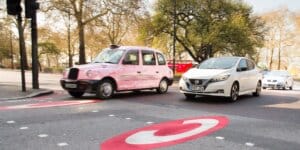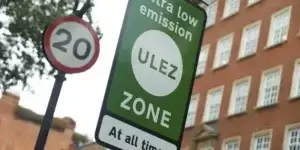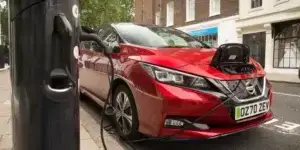The London Congestion Charge was introduced in 2003, but do you have to pay it if you drive your car into central London? Here, we explain what the Congestion Charge is, why it exists, how to pay it and everything else you need to know.
What is the Congestion Charge?
The Congestion Charge is a fee charged to drivers of vehicles travelling within a designated zone in central London. The scheme was introduced in 2003 to help reduce traffic congestion and encourage the use of alternative transportation, such as buses, trains, or walking and cycling. By charging drivers to enter the area, the Congestion Charge is designed to discourage car journeys.

Why does the congestion charge exist?
The main aim of the Congestion Charge is to reduce the number of vehicles driving in central London at peak hours. London—like most large cities—has long had an issue with heavy traffic, which has added to air pollution, led to longer travel times, and negatively impacted the health, well-being, and general quality of life of residents.
The Congestion Charge is a way to discourage people from driving if they don’t have to, and it serves as a revenue source. Money raised by the Congestion Charge goes to Transport for London (TfL)—the local government body responsible for most of London’s transport network—and is reinvested into public transport and the network’s general infrastructure.
How much is the congestion charge?
The Congestion Charge costs £15 if you pay in advance or on the day, or £17.50 if you pay by midnight of the third day after you enter the charging zone. You only need to pay once per day, no matter how many times you enter and leave the Congestion Charge zone.
Where is the congestion charge zone?
The Congestion Charge zone covers central London, including locations such as the City of London, Oxford Street, Westminster, and the South Bank. You can see a detailed map of the zone on the Transport for London website.
Is the congestion charge the same as ULEZ?
The Congestion Charge is not the same as the Ultra Low Emission Zone (ULEZ). Although both are aimed at reducing local air pollution, they are different schemes.
The Congestion Charge focuses mainly on reducing traffic and is active during specific hours, while the ULEZ is more focused on the emissions that contribute to air pollution and is active 24 hours a day. ULEZ also covers a larger area and is scheduled to expand further in August 2023.
If you plan to drive in London, it’s worth checking whether your car meets the criteria for both schemes. If it doesn’t, you’ll need to pay two separate fees.

What time does the congestion charge start and end?
The Congestion Charge is in effect Monday to Friday from 7am to 6pm and Saturdays and Sundays from 12pm to 6pm. There’s no charge between Christmas Day and the New Year’s Day bank holiday (inclusive).
How do I know if I need to pay the congestion charge?
You need to pay the Congestion Charge unless the vehicle you’re driving is eligible for specific discounts or exemptions, all of which only take effect after you’ve applied to TfL online.
For example, residents living within a set discount zone qualify for 90% off the cost, while Blue Badge holders can register for a 100% discount for up to two vehicles.
You can also get a 100% discount if your vehicle has nine or more seats. If you have a pure-electric car or a hydrogen fuel-cell car, you should be eligible for a 100% ‘cleaner vehicle’ discount, although this will be discontinued from 25 December 2025.

Is the congestion charge free for electric cars?
The Congestion Charge is free for electric cars, but it’s not automatic. You must register with TfL before you drive into the zone. Once you provide copies of your V5C vehicle registration certificate (often known as the logbook) and pay a £10 annual registration fee, you can drive into the Congestion Charge zone at no cost.
For more information on electric vehicles, check out our Electric Car Buyer’s Guide.
Related article: Top cars for avoiding the congestion charge.

How to pay the congestion charge
You can pay for the Congestion Charge in several different ways. The official TfL website lets you pay online, or you can use a dedicated Congestion Charge app. If you don’t have internet access, you can pay by phone or set up an Auto Pay account for automatic payments.
While you used to be able to pay the Congestion Charge in various shops and petrol stations, this is no longer possible.
What happens if I don’t pay the congestion charge?
If you don’t pay the Congestion Charge, you’ll get a penalty charge notice (PCN). The boundaries of the zone are enforced by cameras that can read your car’s number plate. The penalty charge is £180, but it’s discounted to £90 if you pay within 14 days of receiving the notice.
If you think you’ve wrongly received a PCN, you can contest it with TfL online or in writing. If you don’t pay within 28 days of receiving it, the cost goes up to £270, and you’ll no longer be able to contest it unless you make a statutory declaration—a sworn oath that must be signed before a solicitor, county court official, or a justice of the peace.
Final Thoughts
Understanding the Congestion Charge is crucial for anyone driving in central London. It not only helps reduce traffic congestion but also contributes to improving air quality and the overall environment. By knowing when and how to pay the charge, you can avoid penalties and enjoy a smoother driving experience in the city.
For more information on vehicle related news, visit our Motors Advice Hub.


